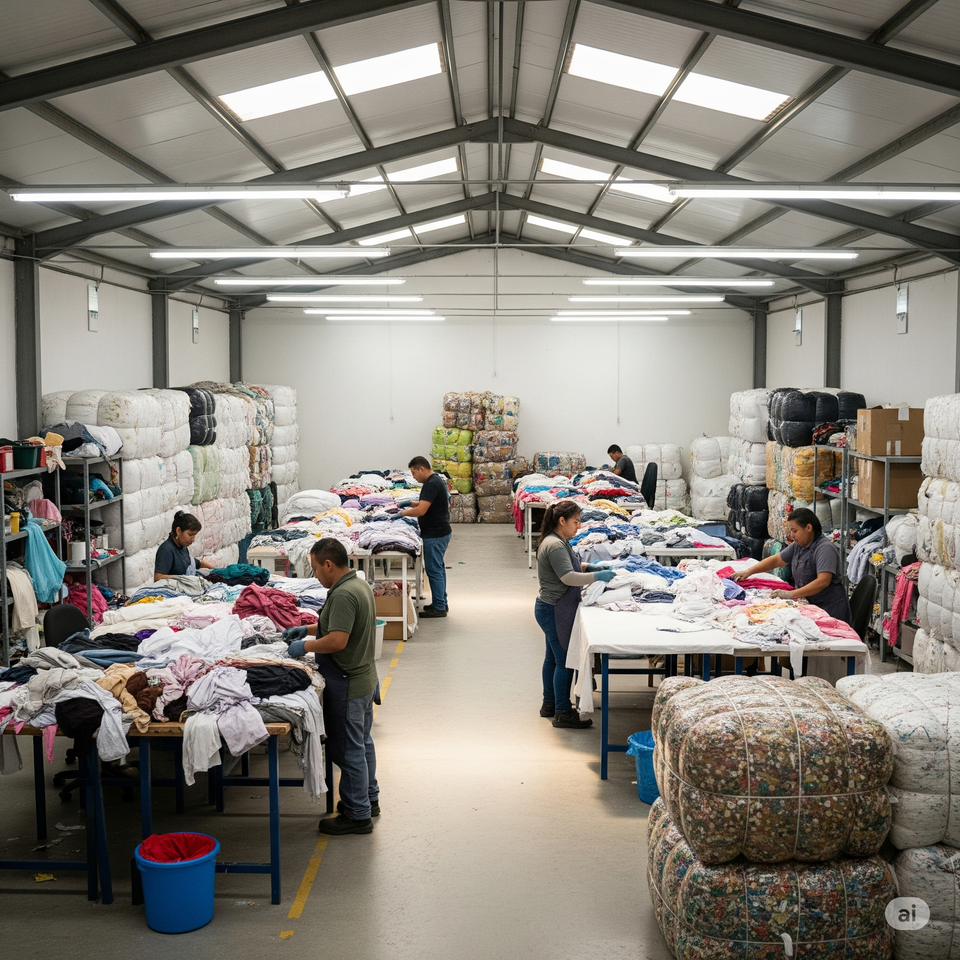

Where do your donations go?
Why is it so important to donate/recycle?

Where do the clothes go? A question that we hear always. It is a valid question because ask ten people, you'll get ten different answers.
A quick breakdown of what to the clothes and shoes dropped into a BINcentives bin.
Unfortunately, about 3-5% are useless and need to be thrown into landfills or are incinerated.
About 30-40% of what we collect is shipped overseas, specifically to Central America where, according to The Tico Times, the Second Hand Clothing industry is thriving. It gives jobs to 100's of thousands of people and 10's of millions of tax dollars to each country every year. This, coupled with keeping these textiles from landfills and greatly slowing the production of more and more and more clothes.
Throwing textiles in landfills is extremely harmful to our environment because of the difficulty of them breaking down and the toxic dies that leak into the ground water. However, over 20% of Global Clean Water pollution is caused by the manufacturing of textiles.
This is from the European Parliment
"It takes a lot of water to produce textile, plus land to grow cotton and other fibres. To make a single cotton t-shirt, 2700 litres of fresh water are required according to estimates, enough to meet one person’s drinking needs for 2.5 years."
So, if the Second Hand Clothing industry from central America is removed, they'll be forced to buy cheaply made clothes from China. This will drastically increase textile manufacturing.... adding to the greater global problem. That won't happen in Central America though. It is a thriving industry engrained in all of their countries.
Bloomberg Linea offers an informative article about how Central America has embraced the Second Hand Clothing industry. Any items that can't sell are sent to recycling centers to be recycled and repurposed.
The Remaining % (Roughly 25-50%): Recycled and repurposed into items like industrial rags, insulation, or carpet padding (downcycling). A very small fraction might be recycled back into new textiles if technologically feasible.
I know there are bad stories from around the globe, but there are also good. The sources I cite are reputable and they point out that this is an important industry for Central America. A lot of jobs in retail and recycling, nice clothes to sell and wear and as important, less new clothing production.
A quick breakdown of what to the clothes and shoes dropped into a BINcentives bin.
Unfortunately, about 3-5% are useless and need to be thrown into landfills or are incinerated.
About 30-40% of what we collect is shipped overseas, specifically to Central America where, according to The Tico Times, the Second Hand Clothing industry is thriving. It gives jobs to 100's of thousands of people and 10's of millions of tax dollars to each country every year. This, coupled with keeping these textiles from landfills and greatly slowing the production of more and more and more clothes.
Throwing textiles in landfills is extremely harmful to our environment because of the difficulty of them breaking down and the toxic dies that leak into the ground water. However, over 20% of Global Clean Water pollution is caused by the manufacturing of textiles.
This is from the European Parliment
"It takes a lot of water to produce textile, plus land to grow cotton and other fibres. To make a single cotton t-shirt, 2700 litres of fresh water are required according to estimates, enough to meet one person’s drinking needs for 2.5 years."
So, if the Second Hand Clothing industry from central America is removed, they'll be forced to buy cheaply made clothes from China. This will drastically increase textile manufacturing.... adding to the greater global problem. That won't happen in Central America though. It is a thriving industry engrained in all of their countries.
Bloomberg Linea offers an informative article about how Central America has embraced the Second Hand Clothing industry. Any items that can't sell are sent to recycling centers to be recycled and repurposed.
The Remaining % (Roughly 25-50%): Recycled and repurposed into items like industrial rags, insulation, or carpet padding (downcycling). A very small fraction might be recycled back into new textiles if technologically feasible.
I know there are bad stories from around the globe, but there are also good. The sources I cite are reputable and they point out that this is an important industry for Central America. A lot of jobs in retail and recycling, nice clothes to sell and wear and as important, less new clothing production.
